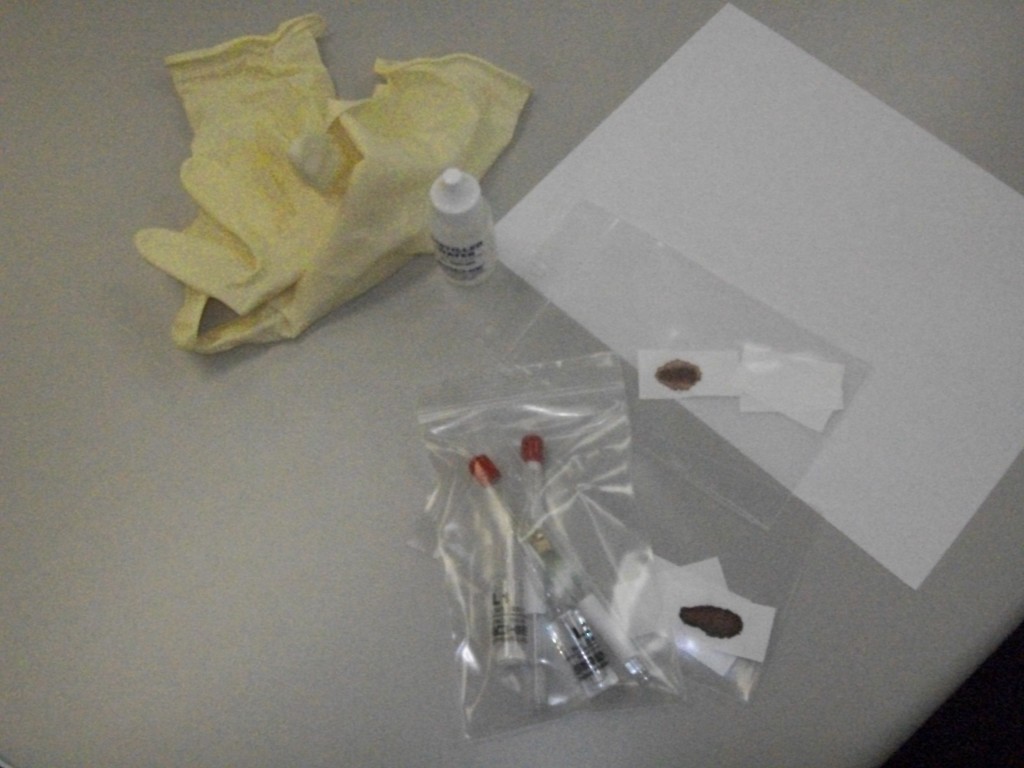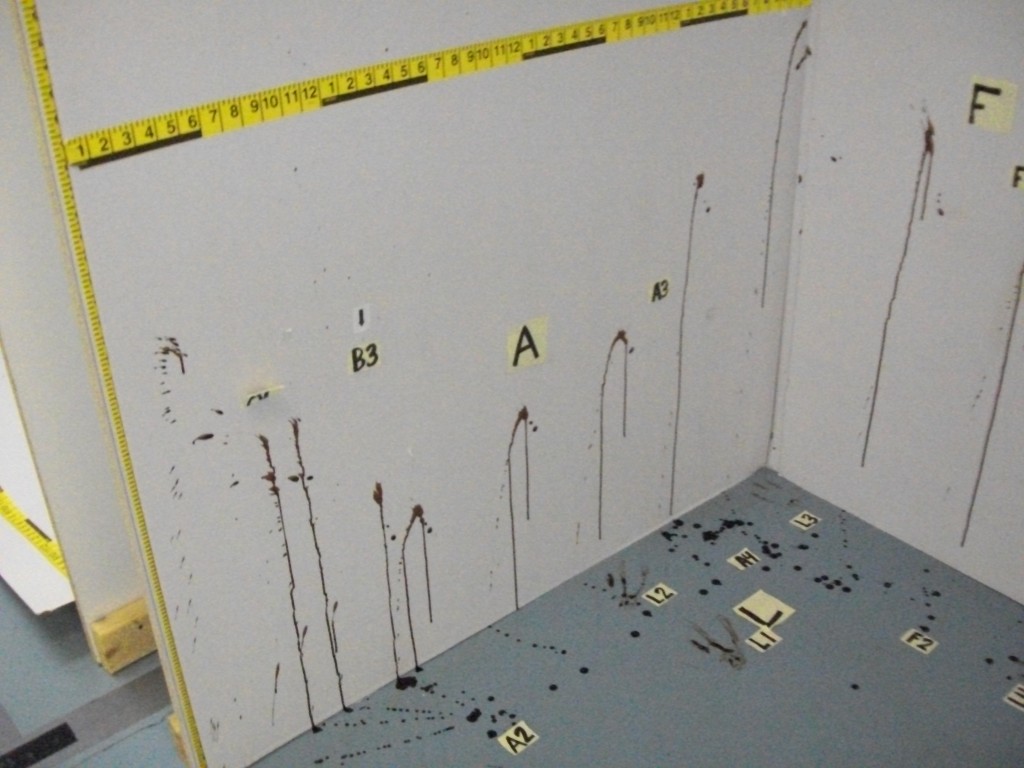If you are just joining us today, be sure to check out Day 1 and Day 2 of my time studying Crime Scene Analysis at SIRCHIE Fingerprint Laboratories.
Originally posted July 11, 2012:
You’ve been called to a crime scene, and it is a bloody mess. Or is it? There’s a dead body on the floor, and what appears to be blood all over the walls, the floor, the furniture.
What appears to be blood…
Oh, sure, it might be a reasonable assumption. But how do you know that your victim didn’t suffer a heart attack after discovering that someone had sprayed chocolate sauce all over her pristine living room? Or have a Jackson Pollock moment with a bottle of ketchup? Or keel over from exhaustion while acting out his one-person version of Titus Andronicus with some really realistic stage blood?
You don’t.
Which is why you would perform a presumptive blood test. In other words, you presume it is blood, but you still got to test it to make sure.
So you test your blood. Since you can see it, you would not use Luminol. Luminol is that stuff on TV that makes blood glow in the dark. However much you’d like to spray up your crime scene with Luminol, you don’t want to dilute your blood sample. Instead, you use one of your other tests. Since you like the color pink, you opt for the phenolphthalein.
First you swab the blood, because you never want to perform your test directly on the original sample. Then you prepare your phenolphthalein by cracking the two parts inside the vial and shaking it up. You place one drop on your swab. It turns pink. Voila.
It’s blood your victim’s blood, right? Right? Right???
Maybe.
But actually, all the test is telling you is that your sample has tested positive for hemoglobin.
So it might be your victim’s blood.
Or it might be your perp’s blood.
Or it might be chicken, sheep or cow blood.
Or it might actually be horseradish.
That’s right. Horseradish will also turn your swab pink.
So, while there’s a good chance that the goopy red substance that you’ve tested was once coursing through the veins of the body lying on the floor, if you are the crime scene technician, it isn’t up to you to make that call.
Now, if you can’t see the blood, but you suspect its presence, that’s a time for using Luminol, or a a similar agent like Bluestar. This will make any unseen blood glow in the dark. But keep an eye out for a starlight effect. This is when your sample area shimmers like someone is sprinkling fairy dust. This could be caused by the presence of bleach or other household cleaners, which will cause a false positive. That said, if I had done something to make massive amounts of blood spray somewhere, I would probably attempt to clean it up with bleach. A bloody trail could still be revealed once the shimmering stops.
The thing about blood is it is really, really hard to get rid of. You can scrub it with bleach or paint over it, and it will still be detectable years later.
And it will tell a story. Check out the blood spatter below.
This blood spatter tells a story. And that story is just another clue that could help catch a killer.








